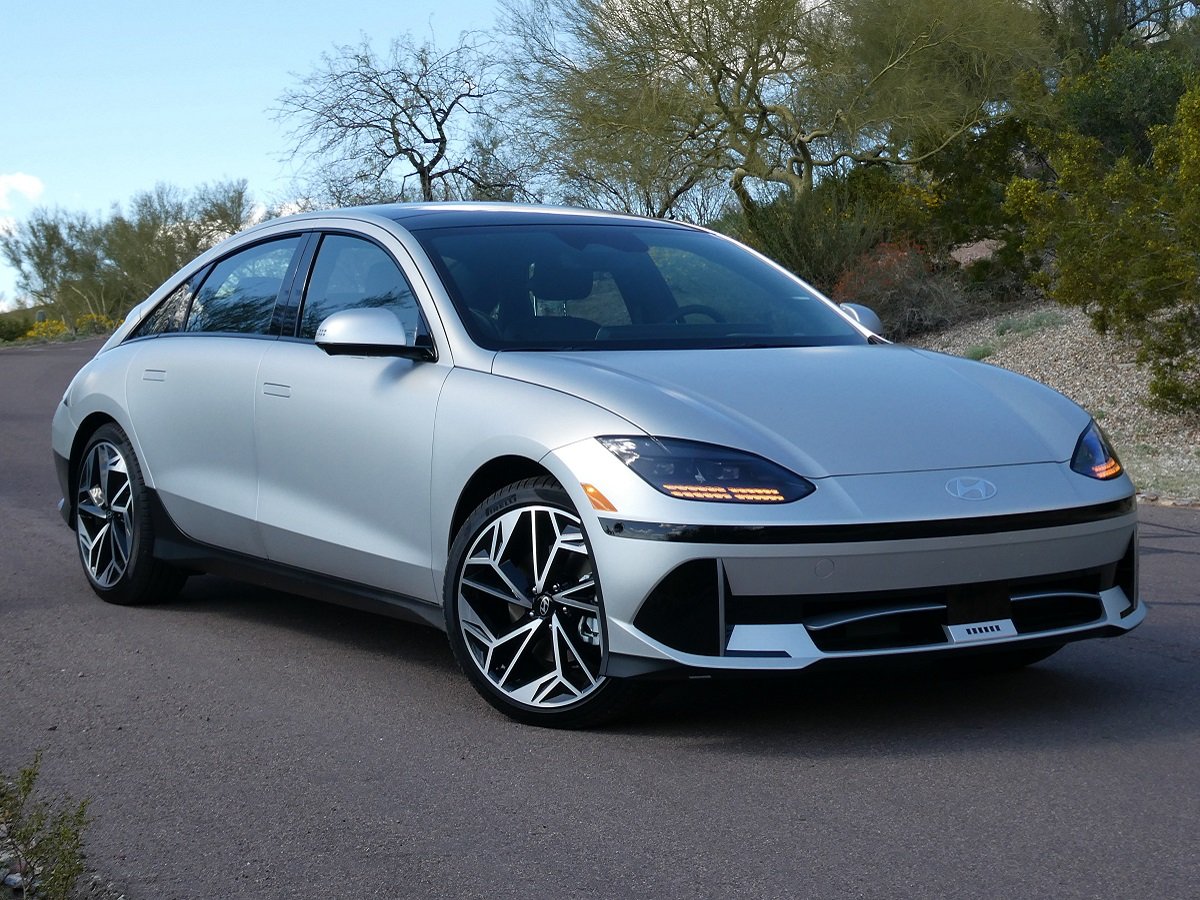As more vehicles transition to electric propulsion, we’ve made it our mission to evaluate the often-lofty claims automakers make about their latest electric offerings.
For decades, we’ve been testing performance metrics, and in 2021, we added a fast-charging test to our procedures. This test measures the time it takes an EV to charge from 10 to 90 percent, providing a clearer picture of real-world charging capabilities.
There are several ways to assess how quickly an EV can recharge. One method is to look at the peak charging rate, which refers to the highest kilowatt draw the vehicle reaches during charging.
While this figure can be striking, it’s not always the best reflection of actual charging performance. A more meaningful indicator is the average charging rate over the entire 10 to 90 percent range.
This metric provides a better sense of how fast you’ll be back on the road since peak rates often drop sharply as the battery nears full. Additionally, using the average charge rate avoids discrepancies caused by different battery sizes between vehicles.
To provide a complete picture, we also use the results of this fast-charging test in combination with our 75-mph highway range test.
This allows us to estimate how long it takes to add 50, 100, or 150 miles of real-world driving range. We also record the total time it takes to complete a 10 to 90 percent charge.
Based on these average charging rates, we’ve compiled a list of the five fastest and five slowest EVs we’ve tested over the years. The first half of this list features the fastest-charging models, followed by the slowest.
We’ve also included the vehicles with the highest and lowest peak charging rates, as well as those that completed our test in the shortest and longest times.
2024 Chevrolet Silverado EV
At the top of the list is the 2024 Chevrolet Silverado EV RST. This electric pickup addresses several EV concerns in one package. It’s one of the few EVs we’ve tested with over 400 miles of range and holds the record for the highest average charging rate in our 10-to-90 percent test.
The Silverado EV averaged 198 kW and reached a peak of 315 kW. It added 50 miles of range in just nine minutes, 100 miles in 17 minutes, and 150 miles in 25 minutes, making it an excellent option for road trips.
Although it shares its electric powertrain with the bold GMC Hummer EV, the 2024 Chevrolet Silverado EV presents a more traditional take on the electric pickup truck.
One of its standout features is an available midgate design, which enables users to fold down the partition between the bed and the cab to expand storage space. This practical addition may remind some of the now-discontinued Chevrolet Avalanche from the early 2000s.
A large battery pack is expected to deliver up to 450 miles of range on a full charge, and DC fast-charging technology allows the battery to gain 100 miles of range in just 10 minutes. The Silverado EV uses dual electric motors to provide standard all-wheel drive and delivers up to 754 horsepower.
It is designed to tow up to 10,000 pounds and carry a payload of up to 1,440 pounds. The Silverado EV enters a competitive field, contending with rivals such as the Ford F-150 Lightning, the Rivian R1T, and the Tesla Cybertruck.
The Silverado EV is a new addition to the Chevrolet lineup and will begin reaching customers in 2023 as a 2024 model. The fleet-targeted 4WT Work Truck will be the first to arrive, followed later by consumer-focused trims.
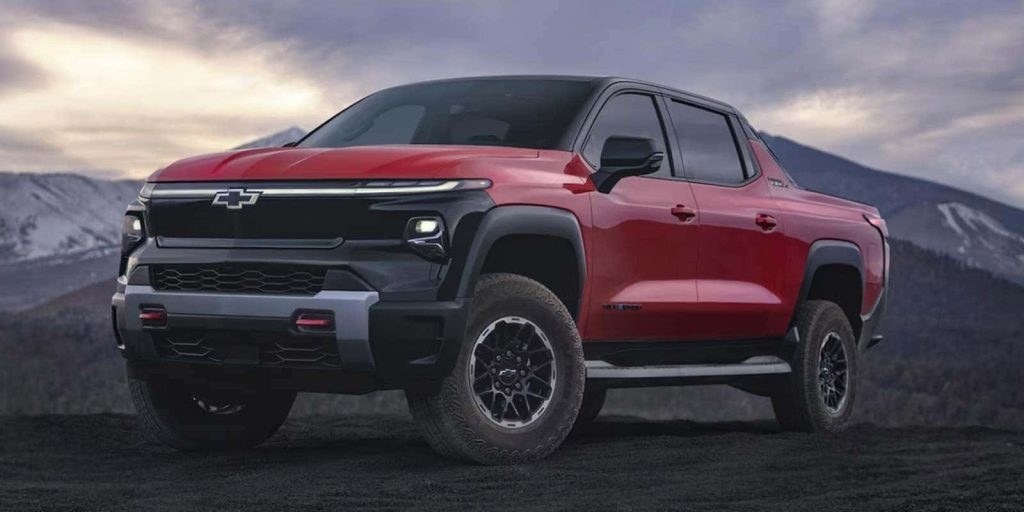
The starting price for the 2024 Chevrolet Silverado EV is $74,800, with the top trim priced at $96,495, depending on selected options.
The 3WT trim starts at $74,800, the 4WT at $79,800, and the high-end RST trim—our recommended pick—at $96,495. At launch, Chevrolet will offer the Silverado EV in Work Truck variants (3WT and 4WT) and a fully equipped RST First Edition.
Mid-level trims are expected to be introduced later to provide a broader range of options. Since the Work Truck lacks many of the Silverado EV’s most appealing features, we recommend aiming for the RST or waiting for a well-equipped mid-range model.
Unlike the Hummer EV, which can be equipped with up to three electric motors, the Silverado EV will utilize a two-motor setup. Even so, this configuration should provide strong acceleration.
The top trim offers up to 754 horsepower, while the base WT trim produces 510 horsepower. All-wheel drive is standard across all trims, and buyers can choose to add rear-wheel steering and adaptive air suspension.
A set of eye-catching 24-inch wheels is also available. The Trail Boss trim is expected to enhance off-road capability with features such as locking differentials, aggressive all-terrain tires, and upgraded suspension elements.
The Silverado EV delivers a smooth ride and reasonably good handling for a vehicle of its size, with dynamics that feel more SUV-like than those of a traditional full-size pickup. However, during testing, we found the braking performance of the RST model underwhelming, as it suffered from brake fade after multiple hard stops.
The RST model we tested accelerated from 0 to 60 mph in just 4.1 seconds using its “Wide Open Watts” drive mode. In its standard drive mode, it reached 60 mph in 5.8 seconds.
Although the 4WT model is less powerful, it still impressed us with its quick acceleration. We estimate it can reach 60 mph in approximately 5.4 seconds.
The Silverado EV’s maximum towing capacity is 10,000 pounds, and its maximum payload capacity is 1,440 pounds. Chevrolet has also announced plans to introduce a future model capable of towing up to 20,000 pounds.
The Silverado EV will feature General Motors’ innovative Ultium battery technology, which allows the battery pack to be scaled up to a maximum capacity of 205 kWh.
According to EPA estimates, the 4WT model offers a driving range of 450 miles on a full charge, while the 3WT provides a slightly lower range of 393 miles.
As always, real-world range will vary depending on conditions, especially when towing—a task that the Silverado EV is well-equipped to manage. DC fast charging will come standard, and Chevrolet claims that 100 miles of range can be added in just 10 minutes when using a public DC fast-charging station.
2023 Genesis GV70 Electrified
Following that is the 2023 Genesis GV70 Electrified, which, despite having a smaller 77-kWh battery, completed the fast-charging test in just 24 minutes. It added 100 miles in only 13 minutes and hit 150 miles after just 10 more.
The GV70 peaked at 239 kW and averaged 166 kW during the test. Much of its fast-charging ability comes from the advanced 800-volt architecture shared by many Genesis, Hyundai, and Kia models.
If you’re in the market for a luxurious electric SUV, you’re probably looking at German options like the BMW iX3 or Audi Q6 e-tron. However, you might not have considered a South Korean contender, and the Genesis Electrified GV70 is here to show you why it deserves your attention.
Genesis is Hyundai’s luxury brand, much like Lexus is to Toyota, so you can think of the Electrified GV70 as a more premium, refined version built on solid foundations.
It’s not just a Hyundai dressed up; it’s a striking vehicle that easily rivals the Audi Q6 e-tron in looks, featuring a bold grille and sleek split headlights and taillights that help it stand out.
Inside, the sense of luxury becomes even clearer. The build quality rivals that of the German brands, with soft leather and alcantara covering nearly every surface.
Scratchy plastic is virtually nowhere to be found, and the cabin design is more interesting than that of the BMW iX3. A 14.5-inch touchscreen infotainment system sits prominently on the dashboard and is fairly easy to use, though it’s a bit of a reach from the driver’s seat. Thankfully, a BMW-style rotary controller in the center console helps compensate for that.
Space inside the GV70 is decent but not exceptional. Rear passengers have adequate legroom and headroom, and the back seats even recline, offering more comfort for passengers on longer trips. The boot isn’t as large as some rivals, but its square shape and lack of a load lip make loading easier.
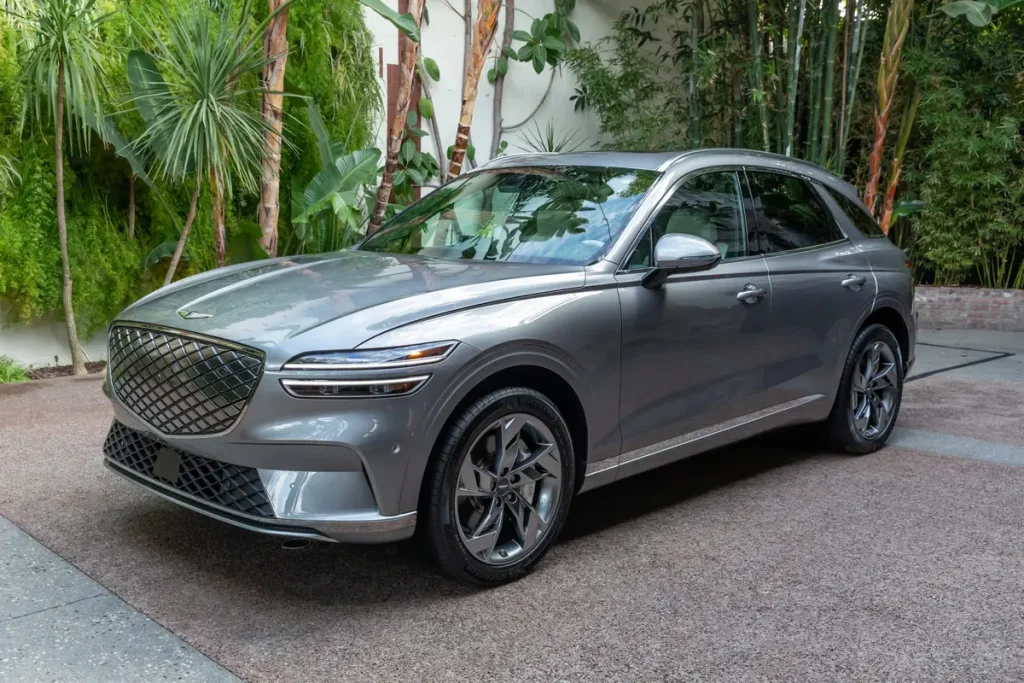
There is also generous underfloor storage for charging cables, which is useful since the front trunk is laughably small. Once on the road, you’ll appreciate the quiet cabin thanks to double-glazed windows, and the ride is smooth and refined on highways.
However, the suspension tends to jiggle over smaller bumps and becomes quite bouncy on twisty back roads. The GV70 leans noticeably in corners, unlike the more engaging BMW iX3, but it’s not designed to be a sporty vehicle—if you drive it gently, it’s a pleasant cruiser.
That said, driving gently might be tough because this electric SUV packs serious power. It has a dual-motor setup with 490 horsepower and can sprint from 0 to 60 mph in just 4.2 seconds. There’s also a button on the steering wheel that provides a 10-second power boost for overtaking.
When you hit it and floor the accelerator, the car pitches back and its nose points skyward like a speedboat as it rockets forward. It’s a thrilling experience, though the steering feels a bit light during this burst, which can be slightly unnerving.
The GV70 Electrified’s 74kWh battery offers a claimed range of 283 miles. While this isn’t outstanding compared to competitors like the Audi Q6 e-tron, which can reach nearly 400 miles, it supports 350kW DC fast charging, allowing you to recharge from 10 to 80 percent in less than 20 minutes.
Although Genesis doesn’t have the brand recognition of Audi or Mercedes, the GV70 Electrified matches or even surpasses them in luxury and style.
Combined with a strong list of standard features and impressive performance, it makes for a compelling and unconventional alternative to the more established luxury electric SUVs.
2023 Hyundai Ioniq 6 Long Range SE
Next is the 2023 Hyundai Ioniq 6 Long Range SE, which averaged 153 kW and peaked at 243 kW. Thanks to its aerodynamic shape, it adds range faster than some of its EV relatives.
It needed only 14 minutes to add 150 miles of range—just enough time for passengers to stretch their legs and grab a snack during a road trip.
The Hyundai Ioniq 6 looks like something straight out of a mid-1990s techno-dream of the year 2024 brought to life. Imagine an ovoid Taurus reimagined as a hovercar, zipping through a futuristic New Metropolis, USA, with 8-bit MIDI whooshing sounds—if you’re unsure whether that’s a compliment or a critique, you’re not alone.
The Ioniq 6 offers plenty of impressive qualities, including excellent charging speeds, a range that challenges even the most patient drivers, and a truly unique presence on the road.
However, from our very first impression, its styling has sparked debate. In a time when SUVs are regaining sharp, boxy shapes, the Ioniq 6’s rounded, cab-forward sedan design feels either regressive or revolutionary.
How will this bold design age over the next year? To find out, we have a 2024 Hyundai Ioniq 6 SE Long Range for a yearlong review.
To provide more perspective, we’ll also draw on experience with other vehicles sharing the same E-GMP platform, some of which have been long-term test vehicles here. In fact, the author personally leases a 2024 Hyundai Ioniq 5 SEL Long-Range RWD—a replacement for a stolen 2023 Ioniq 5 SEL AWD.
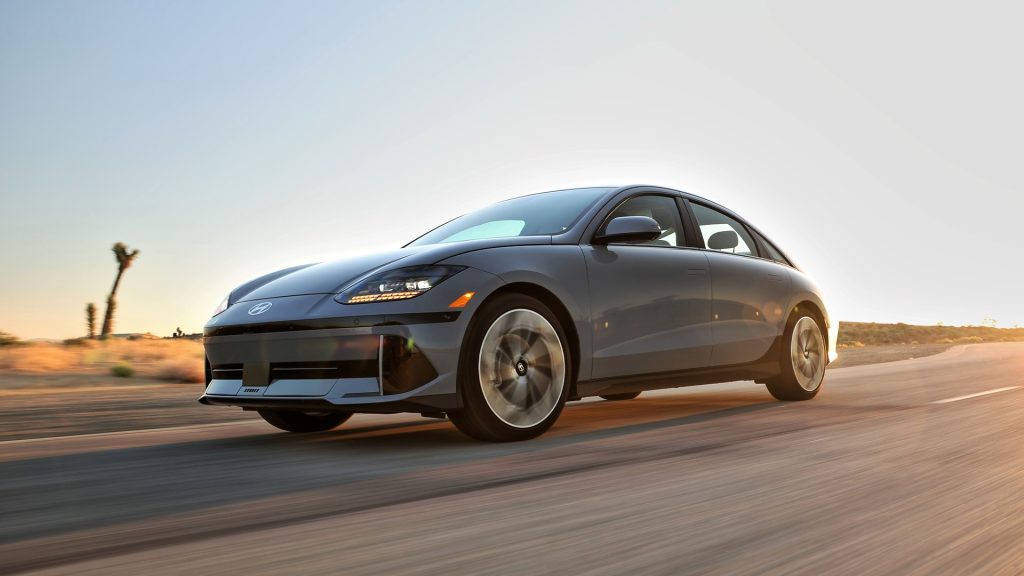
This family has such an affinity for the Ioniq 5 that when an unfortunate circumstance arose, they chose to return to it immediately. So, beyond MotorTrend’s multiple test points, we can compare the Ioniq 6 with real-world ownership experience of two other E-GMP models.
The Hyundai Ioniq 6’s sleek aerodynamic design, combined with an efficient single-motor powertrain and a large battery pack, makes it one of the longest-range electric vehicles you can currently buy—especially at its price level.
The EPA combined range estimate stands at an impressive 361 miles, and in our real-world range test, it came close to 300 miles.
Thanks to its 800-volt architecture, the Ioniq 6 can recharge very quickly using DC fast chargers, outperforming rivals like the Tesla Model 3 in this regard. It is also one of the few non-luxury electric sedans available today.
It’s worth noting that the 2025 Ioniq 6 has a slightly lower EPA range estimate of 342 miles. This change results from an updated EPA testing procedure, but Hyundai confirms there are no hardware or software changes affecting the vehicles. Therefore, real-world range and efficiency should remain consistent.
The SE Long Range trim we’re testing maximizes driving range but sacrifices some convenience and styling features. While the Ioniq 6 boasts a cool interior overall, the SE trim features a somewhat plain black interior with cloth seats, which aren’t particularly luxurious.
It rides on 18-inch AeroDisc-style wheels, which may or may not better absorb road imperfections compared to the larger wheels found on higher trims, such as the 19-inch wheels on the author’s Ioniq 5 (all Ioniq 5s come with 19- or 20-inch wheels, regardless of trim).
Otherwise, the Ioniq 6 SE comes fairly well equipped. It includes a power trunk lid—a feature missing from the similarly priced Ioniq 5 SE.
However, a close look at the specifications reveals some notable omissions: there is no wireless charging pad, the rearview mirror uses a manual flip tab for night driving instead of an auto-dimming feature, there’s no digital key functionality, no ambient lighting, and so forth.
That said, heated front seats, a power driver’s seat, and the dual-screen dashboard are still present. Overall, it doesn’t feel like a stripped-down budget model.
To sum up: the Ioniq 6 SE Long Range offers maximum range for a minimum price, with a tested sticker price of $43,775. We’ve half-jokingly referred to the Ioniq 6 as a “budget Lucid Air,” and we’re eager to see how well that comparison holds up during an extended road trip involving numerous public DC fast charging stops.
2023 Hyundai Ioniq 5 AWD
The 2023 Hyundai Ioniq 5 AWD completed the 10-to-90 percent charge cycle in 26 minutes, averaging 152 kW with a peak of 235 kW.
It added 50 miles of range in 7 minutes, 100 miles in 13 minutes, and 150 miles in 20 minutes. This performance is part of its long-term testing in our fleet, where it demonstrated consistent fast-charging capability.
In some respects, Hyundai prioritized aesthetics over practicality, sometimes to a frustrating degree. For example, I occasionally turned off the headlights unintentionally by brushing my finger against the control knob located at the end of the turn signal stalk.
The wireless charging pad, positioned low in the center console, was so awkwardly placed that I never used it. Even more problematic was the absence of a rear window wiper.
Airflow would blow past the rear glass, leaving rain and other precipitation undisturbed, which severely impaired visibility during wet weather. Thankfully, a rear wiper will be available on the 2025 Ioniq 5.
The infotainment system, displayed on dual 12.3-inch digital screens, was just adequate. While the user interface was generally intuitive, the screen’s responsiveness and resolution were less than impressive.
Features essential for EV ownership—like locating nearby chargers, planning charging stops along a route, or accessing detailed charge session data—weren’t comprehensive enough to make electric vehicle living seamless. Hyundai plans to upgrade the infotainment system in the 2025 model.
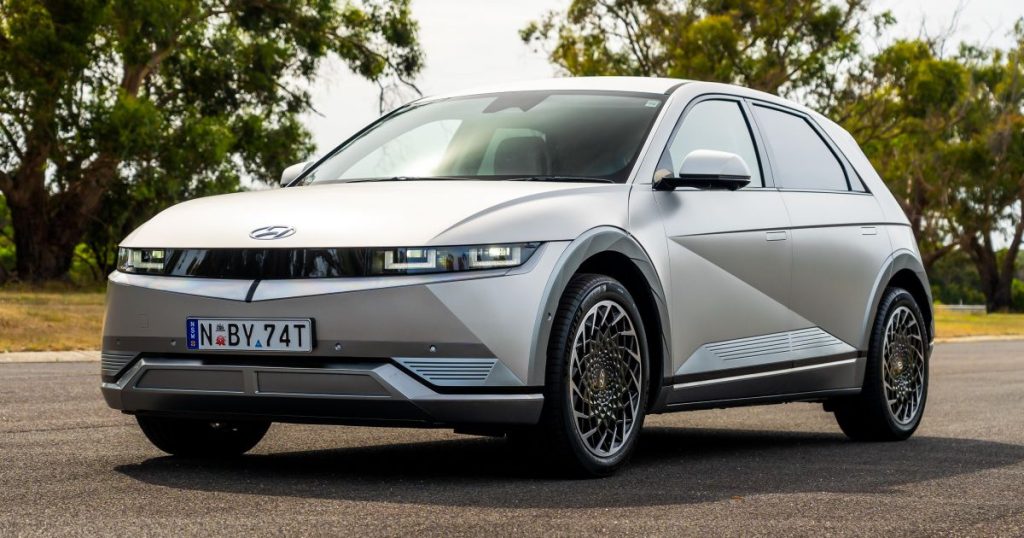
Maintaining our Ioniq 5’s hardware was straightforward and cost-free, thanks to Hyundai’s inclusion of three years or 36,000 miles of complimentary maintenance.
Over three service visits, we paid nothing, matching the zero dollars spent on maintenance for the Volkswagen ID4 during its long-term test, and starkly contrasting with the $318.28 spent on upkeep for our Kia EV6, which shares much with the Ioniq 5.
Hyundai’s service appointments involved tire rotations, routine inspections, and, in one case, the installation of a new charging control module fuse and noise-reducing washers in the tailgate as part of recall repairs.
Aside from a mildly irritating headliner creak that developed over time, the Ioniq 5 proved mechanically robust. Since we used Hankook iON tires provided for a content project for a few months, we never needed to replace the original Michelin Primacy Tour tires.
On the other hand, maintaining the Ioniq 5’s software proved to be more challenging. Although basic software updates were delivered over the air, more extensive updates required downloading software to an external hard drive via a computer, which then had to be plugged into the vehicle.
Another update necessitated a visit to the dealership. Hopefully, by now, the technicians are more familiar with Hyundai’s software-defined vehicles than they were a year or so ago.
2022 Kia EV6 GT
The 2022 Kia EV6 GT matched the Ioniq 5’s average at 152 kW, peaking slightly lower at 232 kW. It added over 66 kWh to its 77-kWh battery during the 26-minute session.
It required just 7 minutes to add 50 miles of range and 14 minutes to reach 100 miles. This fast-charging efficiency makes it one of the quickest-charging EVs currently available.
We liked the Kia Imagine concept when it debuted at the 2019 Geneva auto show. It was well proportioned, featuring taillights that echoed the Kia Stinger and an oversized version of the brand’s signature “tiger nose” grille.
However, it seemed to fall a bit short of fully exploiting the nearly limitless potential offered by Hyundai Group’s flexible E-GMP electric platform.
Apparently, this approach paid off. With its slim and low front end, elongated greenhouse, sculpted fenders, and a strikingly aggressive rear end featuring surprising light effects, the Kia EV6 stands out as a vehicle unlike anything else on the road.
This is true even when compared to its closest relatives—the retro-futuristic Hyundai Ioniq 5 and the softly styled Genesis GV60. The Kia EV6 clearly pays homage to the Stratos—not only in the tail design but also in its helmet-like greenhouse.
The Kia EV6 is arriving in the U.S. market with three trim levels: The $42,115 Light RWD comes equipped with a 58.0-kWh battery and delivers 167 horsepower from a rear motor;
the $48,215 Wind RWD and $52,415 GT-Line RWD trims feature a 77.4-kWh battery and 225 horsepower from the same motor; and the $52,115 Wind AWD and $57,115 GT-Line AWD maintain the 77.4-kWh battery but add a front motor, boosting total output to 320 horsepower.
The 320-hp GT-Line AWD is the version we initially drove in Europe, and the specs important to performance remain identical to the U.S.-market model we recently tested here.
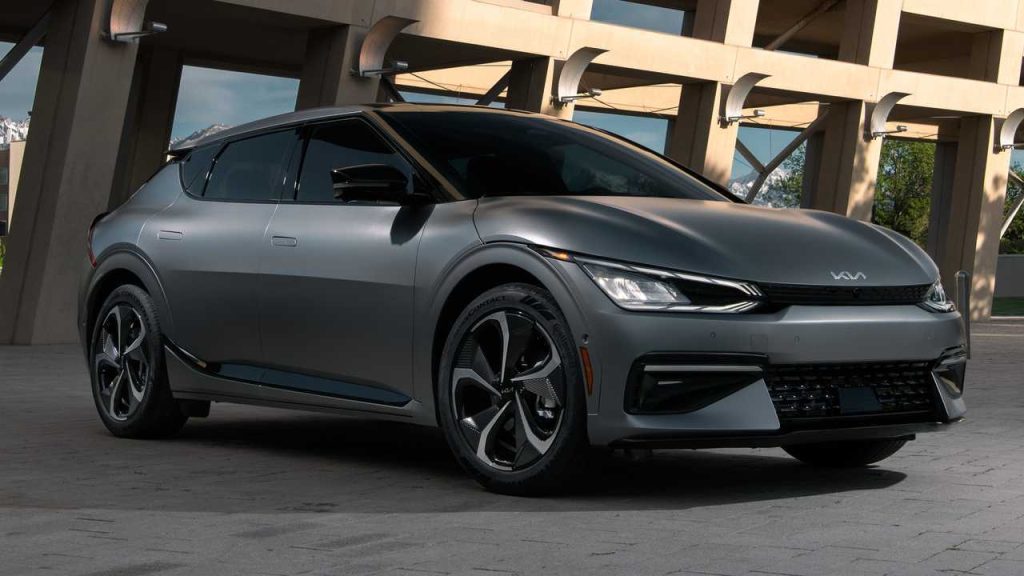
As you approach the EV6, the door handles automatically extend, inviting you in. You enter it like a low-riding car; while Kia calls the EV6 a crossover, it feels less convincing in that category than offerings from Audi, Ford, and Volkswagen.
Though its wheelbase is four inches shorter than the Hyundai Ioniq 5, it remains long relative to the overall length of the vehicle. This translates into generous interior space for both front and rear passengers. There is also a front trunk (“frunk”), but instead of a fully lined luggage compartment, you find a medium-sized plastic box under the hood.
The seats are comfortable and upholstered in grippy black microfiber with light-gray accent stripes. Rear passengers benefit from plenty of room as well as a clever USB port mounted on the back of the front seats.
The floating center console houses the start/stop button, a round gear selector, and a wireless phone charger. Two screens stretch out in front of the driver, with the center screen being touch-sensitive.
The steering wheel sports a futuristic two-spoke design. Overall, the interior doesn’t attempt to mimic conventional cars; instead, it emphasizes that the EV6 is something distinctly different.
Electric Vehicles With Unimpressive Chargers
As electric vehicles (EVs) become increasingly popular, fast and efficient charging is one of the most critical factors for many buyers. After all, how quickly an EV can recharge on the go can make or break the ownership experience.
However, not all electric vehicles deliver on this front—some models have charging systems that fall short of expectations, resulting in longer wait times and reduced convenience.
In this article, we take a closer look at several electric vehicles that, despite their many strengths, are held back by unimpressive charging performance.
2023 Lexus RZ450e Premium
The 2023 Lexus RZ450e Premium comes in fifth on the list of lowest average charging performance. Our first fast-charge test with the Lexus RZ450e was so slow that we brought it back to test a second time.
The re-test was marginally quicker, but not enough to keep the RZ from the bottom of our test results. Despite hitting a decent 150-kilowatt peak, the RZ’s average is a very slow 47 kW, which led to a lengthy 66-minute recharge time.

And because the RZ’s range is so limited, even an hour-long recharge won’t add 150 miles of real-world highway range. “Average Charging Rate: 47 kW. Peak Charging Rate: 150 kW. Total Charging Time (10–90%): 66 min. Time to Add 50/100/150 Miles: 11/35/NA min.”.
2021 Nissan Leaf Plus
The 2021 Nissan Leaf Plus ranks fourth. The Nissan Leaf has the distinction of being the first mass-produced EV sold in the U.S., debuting for the 2011 model year. However, time has passed the electric hatchback by, as more modern EVs have rendered the Leaf largely obsolete.

Not only did the Plus model with the larger 62-kWh battery have the lowest peak charging rate, but its 44-kW average is the second worst. Adding 50 miles of range also took 23 minutes, which is two minutes longer than the Kia EV9 needed to add 150 miles.
“Average Charging Rate: 44 kW. Peak Charging Rate: 52 kW. Total Charging Time (10–90%): 61 min. Time to Add 50/100/150 Miles: 23/45/NA min.”
2022 Chevrolet Bolt EUV
In third place is the 2022 Chevrolet Bolt EUV. While the Chevy Bolt EUV is capable of DC fast-charging, it isn’t able to achieve the triple-digit charge rates that some more expensive EVs are able to.
The 2022 Bolt EUV Launch Edition we tested peaked at a lowly 57 kilowatts and averaged only 41 kW, which led to an 83-minute charge time to go from 10 to 90 percent.
“Average Charging Rate: 41 kW. Peak Charging Rate: 57 kW. Total Charging Time (10–90%): 83 min. Time to Add 50/100/150 Miles: 23/44/82 min.”
The 2023 Chevrolet Bolt EUV builds upon the regular Bolt EV hatchback’s foundation, but its redesigned sheetmetal gives it a much more SUV-like appearance—precisely the style preferred by most American buyers.
The EUV offers a driving range of 247 miles, powered by its 65.0-kWh battery pack. While this range once seemed impressive, it now feels somewhat modest in today’s evolving EV market.
The EUV’s 200-hp electric motor powers only the front wheels, delivering decent performance without any claims of off-road capability—placing it on par with many competitors. It’s worth noting that popular EV SUVs like the Hyundai Kona Electric, Ford Mustang Mach-E, and Tesla Model Y also lack serious off-road abilities.
One area where the Bolt EUV stands out is technology; its top-tier Premier trim includes General Motors’ Super Cruise hands-free driving system, a feature not common among rivals.
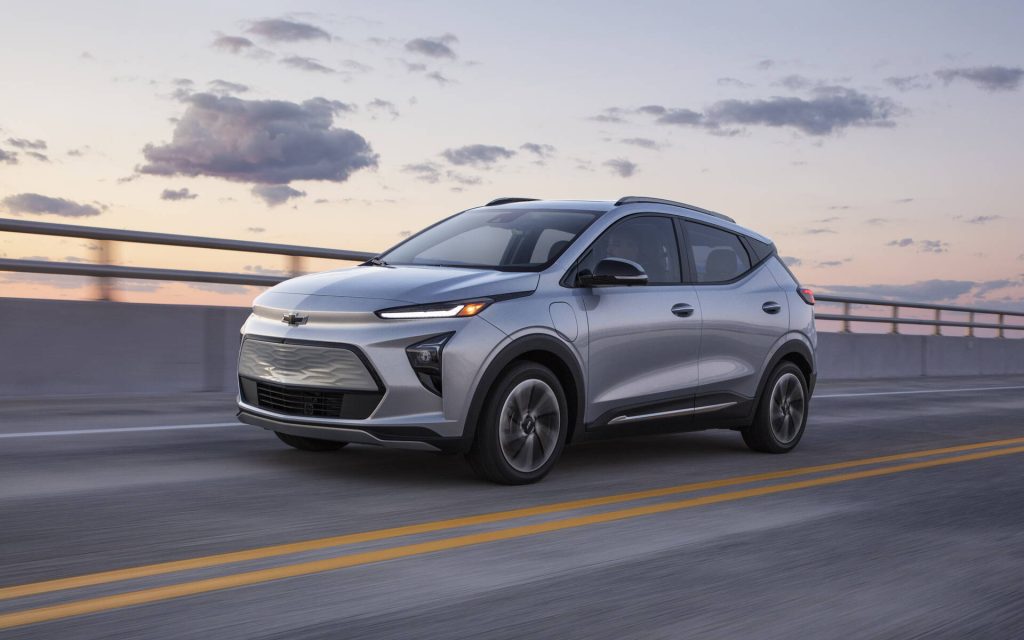
Recent price cuts have also made the Bolt EUV more affordable, with a starting MSRP below many competitors, though some rivals still qualify for the $7,500 federal tax credit, while the Chevy does not. Ultimately, whether the Bolt EUV is a good deal depends on which other EVs you are considering.
For 2023, the Bolt EUV introduces the new Redline Edition package, available on both the LT and Premier trims. This edition replaces the standard chrome exterior accents with glossy black trim and adds unique wheels featuring a red stripe.
The bigger news, however, is the significant price reduction across the Bolt lineup, with entry prices dropping by $6,300.
Unfortunately, 2023 marks the final model year for the Bolt as General Motors plans to retool the factory to produce electric Silverado and Sierra pickup trucks. Pricing for the 2023 Chevrolet Bolt EUV ranges from $28,795 to $33,295, depending on the chosen trim and options.
2024 Fiat 500e
The 2024 Fiat 500e takes second place. In the Fiat 500e’s defense, it’s not really designed for the use case most Americans are after in a car. The minuscule battery is rated for 141 miles by the EPA, though we only managed to eke out 120 miles on our 75-mph highway range test.
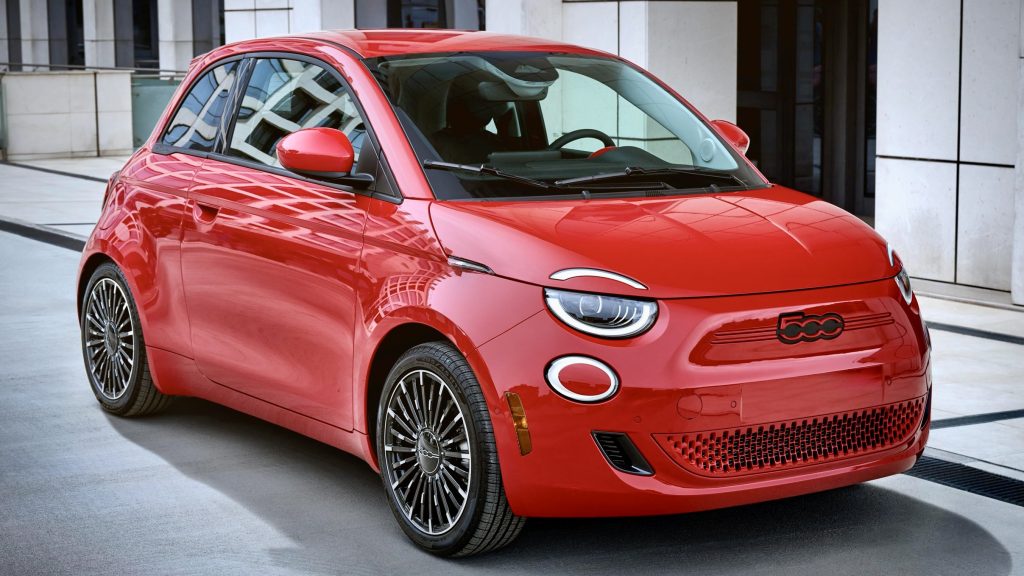
That means that after spending 51 minutes charging from 10 to 90 percent in our test, the 500e only managed to a touch over 32 kWh, which isn’t even enough juice to travel 100 miles.
“Average Charging Rate: 38 kW. Peak Charging Rate: 84 kW. Total Charging Time (10–90%): 51 min. Time to Add 50/100/150 Miles: 18 min/NA/Not Possible.”
2024 Toyota bZ4X
Finally, the 2024 Toyota bZ4X claims the number one spot for the lowest average charging rate. Despite sharing its technology with the 5th-ranked 2023 Lexus RZ listed above, the 2024 Toyota bZ4X is the unfortunate standard bearer for the lowest average charge rate in our fast-charging test.
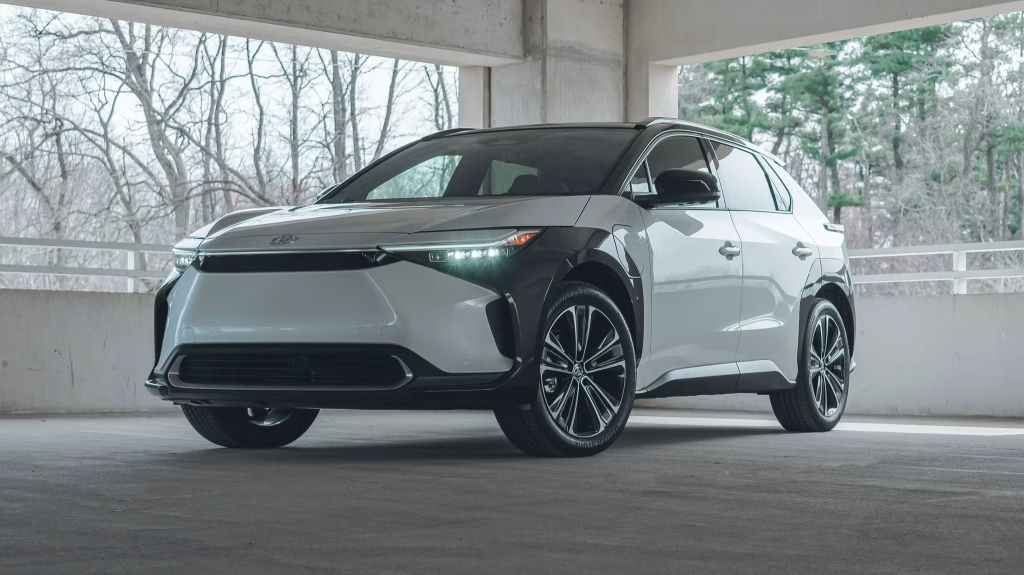
The Toyota averaged a measly 31 kW throughout the test, peaking at 96 kW. It took 49 minutes in total to charge from 10 to 90 percent, requiring 12 minutes to add 50 miles of range, 25 minutes to add 100 miles of range, and 48 minutes to add 150 miles of range.
“Average Charging Rate: 31 kW. Peak Charging Rate: 96 kW. Total Charging Time: 49 min. Time to Add 50/100/150 Miles: 12/25/48 min.”

